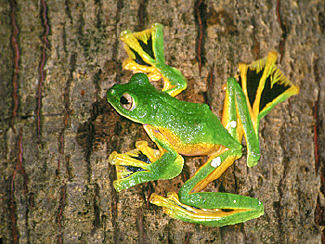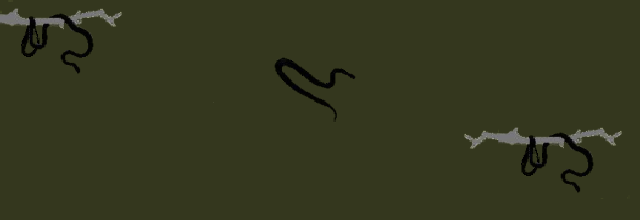Nutrition

 Chrysopelea paradisi, like all other snakes, are carnivorous reptiles that
consume their prey whole.
Chrysopelea paradisi, like all other snakes, are carnivorous reptiles that
consume their prey whole.
The hunt begins when the snake decides that it's time to feed. The snake then begins to survey its environment using its large eyes and the taste receptors on the tongue and inside the Jacobson's organ. Being a arboreal species, the snake spends most of its time amongst the branches and foliage of trees and other plant species and, therefore, usually feeds on a variety of other arboreal species.
A majority of the snakes diet is made up of five types of organisms: lizards, frogs, bats, small birds and the occasional small rodent. C. paradisi, in particular, prefers lizard species over the rest, but will consume whatever is available. Common prey items include geckos, such as the Tokay and the Smooth-Backed Gliding gecko, and skinks.
Once the prey has been identified, the snake will usually attempt to stalk up on the prey item slowly and carefully. Once in striking range, the snake employs a unique way of taking down the prey item. When close enough, the snake bursts forward snaring the prey in the six rows of teeth shared by almost all snake species. Once it has gotten hold, the snake uses a combination of constriction and a very mild venom or toxic saliva to subdue the prey. The constriction itself, is actually used for nothing more than holding the prey still will the venom takes affect.

To full to continue? Glide back to Habitat. Feeling rowdy? Ascend to the Reproduction branch by clicking the snake.

